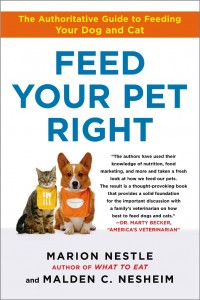White House Task Force on Obesity reports in
This report, Solving the Problem of Childhood Obesity Within A Generation, is a terrific summary of where we stand today on childhood obesity (“the challenge we face”) and what to do about it. The report wants to reduce rates of child obesity to where they were before all this started:
That means returning to a childhood obesity rate of just 5% by 2030. Achieving this goal will require “bending the curve” fairly quickly, so that by 2015, there will be a 2.5% reduction in each of the current rates of overweight and obese children, and by 2020, a 5% reduction.
This seems so modest that it might actually be achievable.
Like most such plans, this one has way too many recommendations, in this case, 70 (the summary table starts on page 89). These are divided up in categories. For example:
Recommendations for early childhood
- Educate and help women conceive at a healthy weight and have a healthy weight gain during pregnancy
- Encourage and support breastfeeding
- Prioritize research into chemicals in the environment that may cause or worsen obesity
- Educate and support parents in efforts to reduce kids’ TV and media time
- Improve nutrition and physical activity practices in child nutrition programs.
For empowering parents and caregivers:
- Government should work with local communities to promote the 2010 Dietary Guidelines for Americans and the 2010 food pyramid.
- USDA and FDA should work with the food and beverage industry to develop standard nutrition labels for packages.
- Restaurants and vending machines should display calorie counts of all items offered.
- The food and beverage industry should extend its voluntary self-regulation to restrict all forms of marketing to children. If this does not happen, federal regulation should be considered
- Media and entertainment companies should limit licensing of popular characters to healthy food and beverage products
- Insurance plans should cover services needed to help prevent, assess, and care for child obesity.
For healthier food in schools
- Update federal standards for school meals and improve the nutritional quality of USDA foods provided to schools.
- Increase funding for school meals.
- Encourage schools to upgrade cafeteria equipment to support healthier foods. Example: Swap deep fryers for salad bars.
- Connect school meal programs to local growers and encourage farm-to-school programs.
- Improve nutritional education in schools and make it more available.
- Increase the use of school gardens to educate about healthy eating.
- Promote healthy behaviors in juvenile correction facilities.
For improving access to healthy foods
- Launch a multi-agency “Healthy Food Financing Initiative” to make healthy foods more available in underserved urban and rural communities.
- Encourage local governments to attract grocery stores to underserved neighborhoods
- Encourage facilities that serve children (e.g., hospitals, recreation centers, and parks) to promote healthy foods and beverages.
- Provide economic incentives to increase production of healthy foods such as fruits, vegetables, and whole grains.
- Evaluate the effect of targeted subsidies on purchases of healthy foods through nutrition assistance programs.
- Study the effects of state and local sales taxes on calorie-dense foods.
For increasing kids’ physical activity
- School programs should stress physical activity as much as healthy nutrition.
- State and local school programs should increase the quality and frequency of age-appropriate physical education taught by certified PE teachers.
- Promote recess for elementary school students and activity breaks for older students.
- Federal, state, and local agencies should partner with communities and businesses to extend the school day in order to offer physical activity programs.
- The EPA should assist communities building new schools to place them on sites that encourage walking or biking to school.
- Increase the number of safe playgrounds and parks, particularly in low-income communities.
- Encourage entertainment and technology companies to continue developing new ways to engage kids in physical activity.
Good ideas, but there are some things I’m not so crazy about here. The plan seems awfully voluntary and let’s be pals and all work together. Voluntary, as evidence demonstrates, does not work for the food industry. Much leadership will be needed to make this plan work. But these recommendations should give advocates plenty of inspiration to continue working on these issues.
The Washington Post has a particularly good summary of the key recommendations, and singles out the ones aimed at marketing to kids.
Jane Black of the Washington Post is cautiously optimistic. Me too.


